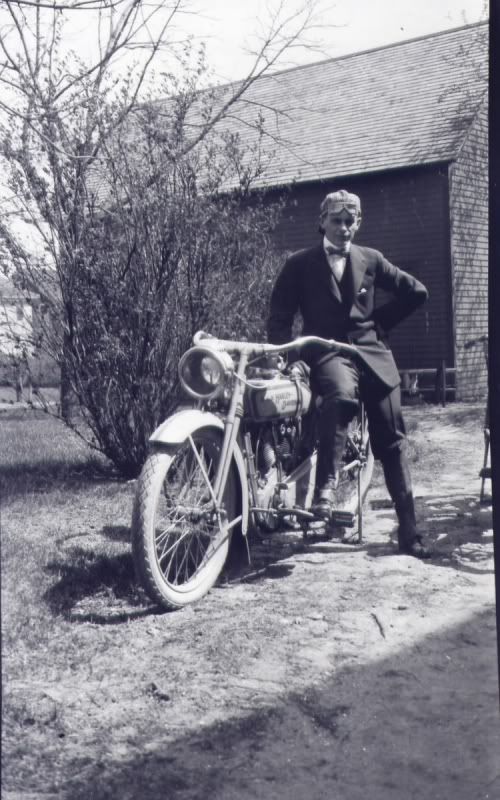here is an old shot of my Grandpa (standing) and his soon-to-be brother in law Harry Reeves seated on the bike. I've always called this a 1917 model, but I don't really know the distinctions between the years as well as I should.
So can one of you HD experts verify or correct what I have assumed by looking at these photos?
Thanks,
Bill


So can one of you HD experts verify or correct what I have assumed by looking at these photos?
Thanks,
Bill



 That's two cents (from not an expert...
That's two cents (from not an expert...
Comment